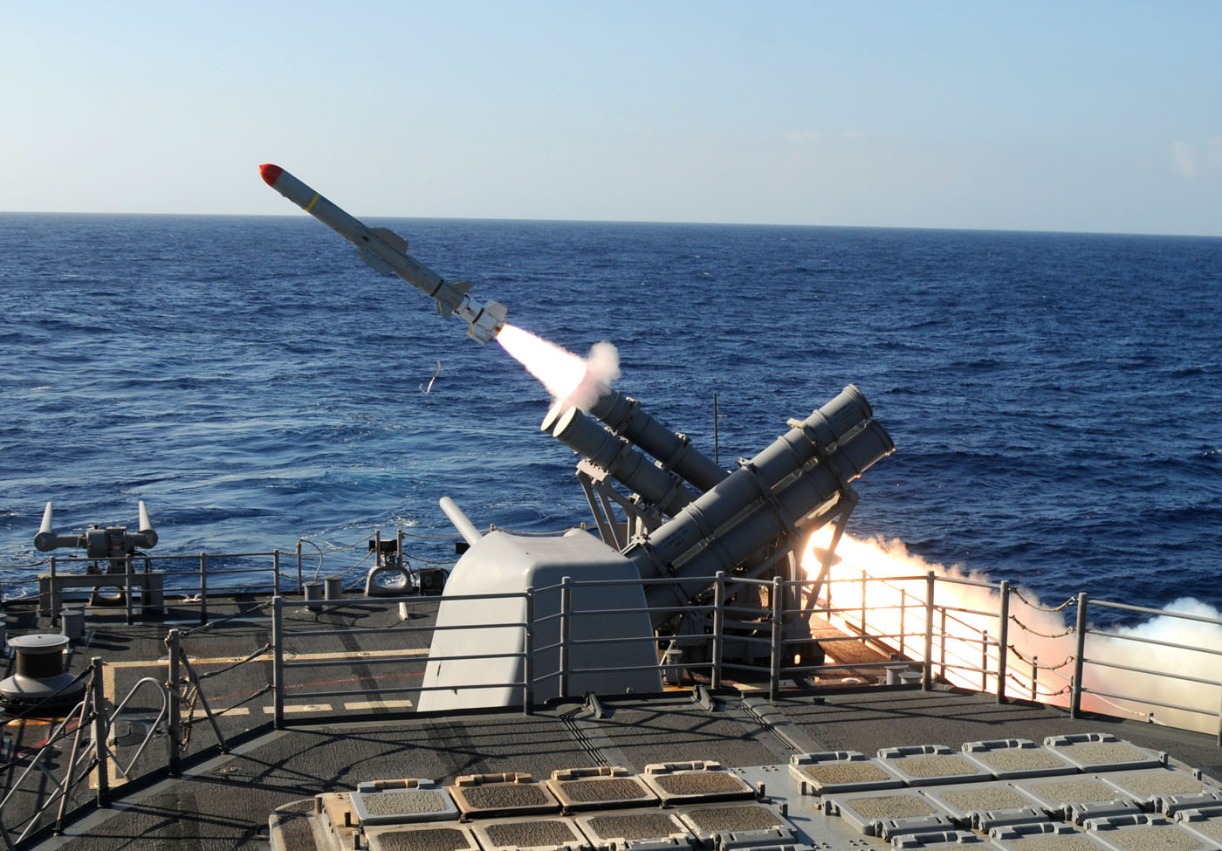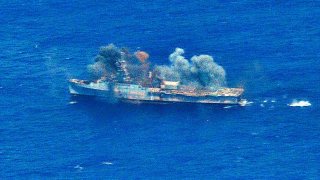Fire! The U.S. Navy Just Sunk Its Very Own "Assault Ship" in a Wargame
During Valiant Shield 2024, the ex-USS Cleveland (LPD-7) was sunk in a planned sinking exercise (SINKEX) to provide realistic training for U.S. Navy personnel.
Summary and Key Points: During Valiant Shield 2024, the ex-USS Cleveland (LPD-7) was sunk in a planned sinking exercise (SINKEX) to provide realistic training for U.S. Navy personnel.

-The retired amphibious transport dock was thoroughly cleaned of hazardous materials per EPA guidelines before being sunk in deep waters.
-SINKEX exercises enhance combat readiness by allowing live-fire training on actual targets, offering invaluable experience that simulations cannot match, and providing critical data for future vessel development.
U.S. Navy Sinks Retired Warship in Valiant Shield Exercise
It was only a drill, but during the recently concluded Valiant Shield (VS) 2024 – a multinational, biennial field training exercise conducted in the Indo-Pacific – one U.S. Navy warship was actually sent to the bottom of the sea. The amphibious transport dock ex-USS Cleveland (LPD-7) was sunk approximately 40 nautical miles from land in the North Pacific Ocean's Mariana Island Range Complex.
It wasn't an accident, however, but rather part of a carefully planned sinking exercise (SINKEX). The Austin-class amphibious transport dock – the third ship of the U.S. Navy to be named for the Ohio city – had been maintained at the Naval Inactive Ship Maintenance Facility at Pearl Harbor, Hawaii, since November 2017. The retired vessel was sunk as a target on June 17, during a naval-fire exercise.
That Sinking Feeling
"SINKEX, short for 'sink at-sea live-fire training exercises', is a program run by the United States Navy that arranges for decommissioned Naval warships to be used in live-fire training. This gives Navy personnel the opportunity to use real ammunition on practical targets and apply what they learn to future conflict, practicing gunnery, missile drills, torpedo accuracy, and even special warfare operations," explained the U.S. Department of Transportation's Maritime Administration (MARAD).
The agency developed an agreement with the U.S. Navy that requires the safe disposal of retired warships. This requires that all environmentally hazardous materials be removed from the vessels before they are sunk in accordance with Environmental Protection Agency (EPA) guidelines. This includes the removal of all liquid polychlorinated biphenyls (PCBs) from a ship's transformers, large capacitors, and small capacitors, while petroleum is drained and then cleaned from the vessel's tanks, pipes, and reservoirs. In addition, all trash, floatable materials, mercury, and fluorocarbon materials are also removed.
In other words, the ship is about as clean as it likely was at any point during its existence.
"The EPA and Navy have identified and agreed upon those materials to be removed from a vessel prior to any SINKEX exercise," MARAD further noted "Procedures are also in place to ensure that vessels sink quickly to the ocean floor and remain there permanently without hindering marine navigation in the area. In addition, all sinkings are conducted in water of at least 6,000 feet (1,000 fathoms) and 50 nautical miles from land."
Not Just Anywhere
In wartime, little consideration is given as to where an enemy warship may be sunk – but during exercises, the U.S. Navy must also adhere to EPA as to where a SINKEX can occur.
According to the U.S. Navy, "SINKEXs are conducted only after the area has been surveyed for the presence of people, marine vessels, aircraft, and marine species. SINKEXs are fully compliant with the National Environmental Policy Act, Marine Mammal Protection Act, Endangered Species Act, and a general permit under the Marine Protection, Research, and Sanctuaries Act."
Why Are SINKEXs Conducted?
Given the strict policies that the U.S. Navy must adhere to, the question becomes why bother? Why go through all the effort to clean a retired warship, and make it environmentally sound to be sunk?
In addition, critics have complained that the sinking of old warships is a waste of recyclable steel and could impact the marine environment. Conservation groups – including the Sierra Club and Basel Action Network – even filed a lawsuit with the EPA in 2011, only to drop their complaint two years later due to lack of funding.
Yet, only a SINKEX can provide participants in large-scale exercises like Valiant Shield the ability to conduct live fire at more than notional targets. It ensures that participants have an opportunity to gain proficiency in weapons and systems through realistic training that really can't be duplicated with simulators.
"The SINKEX program has afforded opportunities for air, surface and subsurface forces to integrate, plan, and execute firing and tactics plans, thereby enhancing combat readiness," the Naval Sea Systems Command noted. "The program also allows the Navy to have more opportunities to train with multi-national forces, thus reinforcing international cooperation. Additionally, live-fire exercises are used to conduct weapons effect testing to assist in acquisition planning and design of future ship classes. Test information gathered from the SINKEX program has been important for future vessel development."

The final argument in support of the SINKEX is that the U.S. Navy makes almost no money from the sale of its warships for scrapping – and even sold the ex-USS Kitty Hawk and ex-USS John F. Kennedy for just one cent each
The ability for the military to sink a vessel in a drill is priceless, and perhaps a more fitting end than a scrap yard's torch.
Author Experience and Expertise: Defense Expert Peter Suciu
Peter Suciu is a Michigan-based writer. He has contributed to more than four dozen magazines, newspapers, and websites with over 3,200 published pieces over a twenty-year career in journalism. He regularly writes about military hardware, firearms history, cybersecurity, politics, and international affairs. Peter is also a Contributing Writer for Forbes and Clearance Jobs. You can follow him on Twitter: @PeterSuciu. You can email the author: [email protected].
All images are Creative Commons.
From the Vault
Russia Freaked Out: Why the U.S. Navy 'Unretired' the Iowa-Class Battleships
Battleship vs. Battlecruiser: Iowa-Class vs. Russia's Kirov-Class (Who Wins?)


